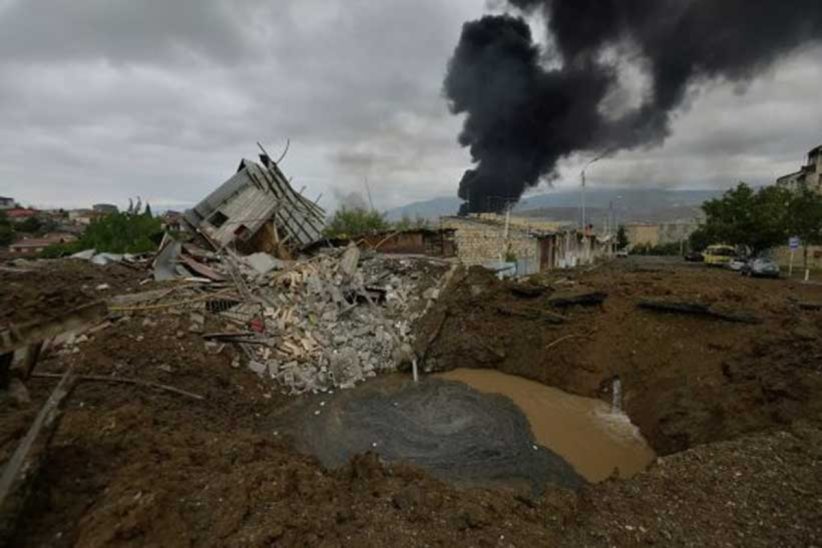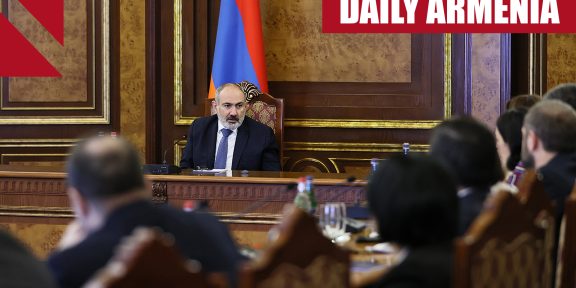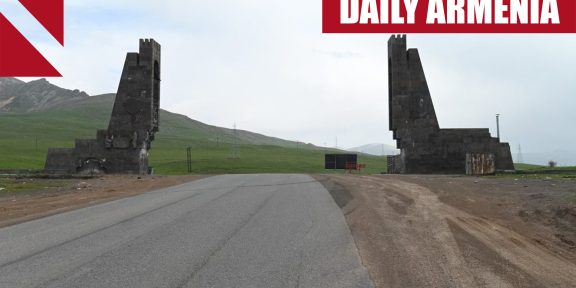By David Akopyan and Hrair Balian
The conflicts in Nagorno-Karabakh and Syria have distinct root causes and regional contexts. However, they share the common thread of authoritarian leaders using brutal force to subjugate opposing civilians through a siege strategy aimed at starvation. The UN response in Syria could serve as model to end the siege in Nagorno-Karabakh.
Over the past nine months, the people in Nagorno-Karabakh, as was the case for years in besieged parts of Syria, have endured a siege blocking essential provisions such as medicine, food, and various other necessities required for daily life. A notable difference between the conflicts in Syria and Nagorno-Karabakh is the international community’s response and the United Nations Security Council (UNSC) role.
In the case of Syria, the UNSC has been proactive in addressing the humanitarian crisis and has made significant efforts to facilitate aid to those in need, including UNSC resolutions and other initiatives aimed at providing humanitarian assistance to the affected population. Additionally, Western governments have imposed sanctions on President Assad and other Syrians.
In the Nagorno-Karabakh conflict, the UNSC has held two non-conclusive sessions in recent months, with a substantially less engaged stance. Furthermore, President Aliyev of Azerbaijan, unlike Assad, has managed to maintain cordial political and economic relations with the United States and the European Union, presenting himself as a supplier of hydrocarbons to Europe. His relations with Western leaders, as well as his participation in international events like Davos and Munich security conferences, have allowed Aliyev to position his regime more favorably than the one in Damascus, despite similar sieges imposed on civilians.
The Nagorno-Karabakh conflict escalated in the early 1990s with the dissolution of the Soviet Union and the Armenians in the enclave declaring independence to safeguard their right to life. A ceasefire was maintained from 1994 through September 2020, when Azerbaijan, with support from Turkey and Israel, initiated a war and ultimately defeated the Armenian forces. In November, Russia brokered a trilateral agreement, enabling Azerbaijan to reclaim part of the Nagorno-Karabakh territory. Importantly, the agreement ensured that the remaining part of Nagorno-Karabakh maintained a lifeline with Armenia through the 5 km Lachin Corridor, with Russian peacekeepers to oversee unimpeded access.
However, the dynamics in the region shifted following the war in Ukraine, which distracted Russia from the Caucasus. Azerbaijan seized the opportunity in December to address the Nagorno-Karabakh conflict more forcefully, ignoring the Russian peacekeepers and imposing a blockade on the Lachin Corridor. The aim is to pressure the Armenian population to submit to Azerbaijani rule either by starvation or an eventual military push, resulting in the ethnic cleansing and genocide of the Armenians in Nagorno-Karabakh.
In the Syrian civil war, a substantial portion of the country came under opposition control early in the uprising. In response, the government imposed sieges on rebel-controlled areas, aiming to compel the populations there into submission without access to essential supplies. The strategy resulted in immense suffering for millions of civilians.
To alleviate the humanitarian crisis, the UNSC adopted resolution 2139 (2014) that approved cross-border aid delivery from Turkey, Iraq, and Jordan through border crossings not controlled by the Syrian government. Subsequent resolutions extended the practice. The Syrian government vehemently opposed these resolutions, but its staunch ally, Russia supported them until July 2023. These resolutions, urged by the global humanitarian aid community, were crucial in providing life-saving aid to millions of Syrians who were facing starvation and deprivation due to the conflict and siege.
The primary goal of the UNSC arrangement for Syria was to ensure that aid reached families in need in the safest, most direct, and efficient manner, free from political considerations or agendas. Throughout this effort, UN humanitarian agencies appealed to UNSC members to authorize cross-border assistance, recognizing the urgency of the humanitarian needs. Simultaneously, attempts were made to establish access to northwest Syria from government-controlled areas (cross-line). The aim was to expand the range of channels for humanitarian assistance and to optimize humanitarian access to reach as many affected populations as possible. This dual approach provided essential aid to those in need while navigating complex political and logistical challenges.
The government in Damascus advocated for aid to be funneled through its own cross-line channels, including the Syrian Red Crescent. The population in besieged enclaves took an unequivocal stance that they would, under no circumstances, accept aid from or through the Damascus regime. Their lack of trust and profound skepticism in the Assad government’s intentions were so entrenched that they preferred to face hunger rather than receive assistance from the Assad regime.
Following long negotiations, a cross-line delivery system for humanitarian aid was established as a complement to the main cross-border operations. Importantly, this new approach entrusted UN agencies with the complete management of the aid supply chain, while the Syrian government was denied any role in inspecting the crossings. This arrangement was designed to address the humanitarian needs of the affected population while upholding their preferences and concerns regarding aid distribution. It also aimed to maintain the impartiality and neutrality of humanitarian assistance in the complex and sensitive context of the Syrian conflict.
Much like the circumstances witnessed in Syria’s opposition-controlled territories, a parallel situation has arisen in Nagorno-Karabakh. Over the past nine months, Azerbaijan has blockaded the Lachin Corridor, which crosses the internationally recognized border between Armenia and Azerbaijan, and which served as the primary supply route to Nagorno-Karabakh.
In lieu of lifting the blockade of the Lachin Corridor, Azerbaijan has proposed to deliver humanitarian assistance to Nagorno-Karabakh via a road from the Azerbaijani city of Agdam, east of Nagorno-Karabakh. However, after 33 years of violent conflict with Azerbaijan, the Armenians in Nagorno-Karabakh are convinced, not without reason, that the authorities of Azerbaijan will manipulate the humanitarian deliveries from Agdam to pressure them into submission.
On 9 September, reports heralded a deal to lift the Lachin Corridor blockade in exchange for the Nagorno-Karabakh authorities allowing aid to come in from Agdam. However, the optimistic reports proved premature, highlighting the need for urgent action. As EU foreign policy chief Joseph Borrell said, “the Lachin Corridor must be reopened now. Other roads, such as Agdam, can be opened as part of the solution, but not an alternative.”
The UNSC could be seized to propose a solution using both the Lachin and Agdam routes for humanitarian deliveries, both under UN monitoring. Mirroring the cross-border mechanisms for Syria, the Lachin Corridor could be reopened to serve as the primary route for the unrestricted delivery of goods to Nagorno-Karabakh in accordance with the International Court of Justice rulings of February and July 2023. At the same time, a portion of international aid could be directed through the Agdam route, but exclusively under the control of the UN, mirroring the cross-line humanitarian aid delivery through Damascus in the Syrian case.
Azerbaijan must not be allowed to exploit the Agdam option and perpetuate the current closure of the Lachin Corridor. If the concern is aid inspections, Azerbaijan could do so through remote mechanisms using modern electronic technology to ensure that the Lachin Corridor is not exploited for non-humanitarian purposes.
For the UNSC, this cross-border/cross-line proposal is not entirely novel or unfamiliar. In the nine years since the adoption of the Syria resolution, the language and purpose of such resolutions have become common knowledge among UNSC members.
***
David Akopyan worked 26 years for the UN in 15 countries across all regions. Last 10 years of his UN career in Afghanistan, Somalia, and Syria, holding leadership positions as UN Development Program deputy director, country director and Resident Representative.
Hrair Balian has practiced conflict resolution for the past 35 years in the Middle East, Africa, Balkans, Eastern Europe, Caucasus and Central Asia. He has served in leadership positions with the UN, OSCE and NGOs, including The Carter Center (Director, Conflict Resolution, 2008-2022).
The article was originally published on Moderndiplomacy.eu
















